Dyeing with Fennel (Foeniculum Vulgare)
- annacarolynmeier
- Jul 2, 2020
- 3 min read
I’ve loved fennel for as long as I can remember. I love the delicious delicate bulbs, the feathery licorice-scented fronds, the golden yellow pollen, the resulting sweet fennel seeds, and of course, the beautiful pale green dye it yields. Here in California fennel is a familiar sight. It grows wild all over the state in roadways, ditches, disturbed farmland, and natural areas. The sight of a stand on fennel on the riverbank, or overlooking the ocean, always feels like home to me, and yet fennel is a transplant, a legacy of colonialism, just like me. This non-native was imported from its Mediterranean home by Italian and Spanish immigrants, and escaped cultivation in the mid-1800’s. Since then fennel has naturalized throughout the state due to its prolific seed germination rate, and its ability to spread through its root system.
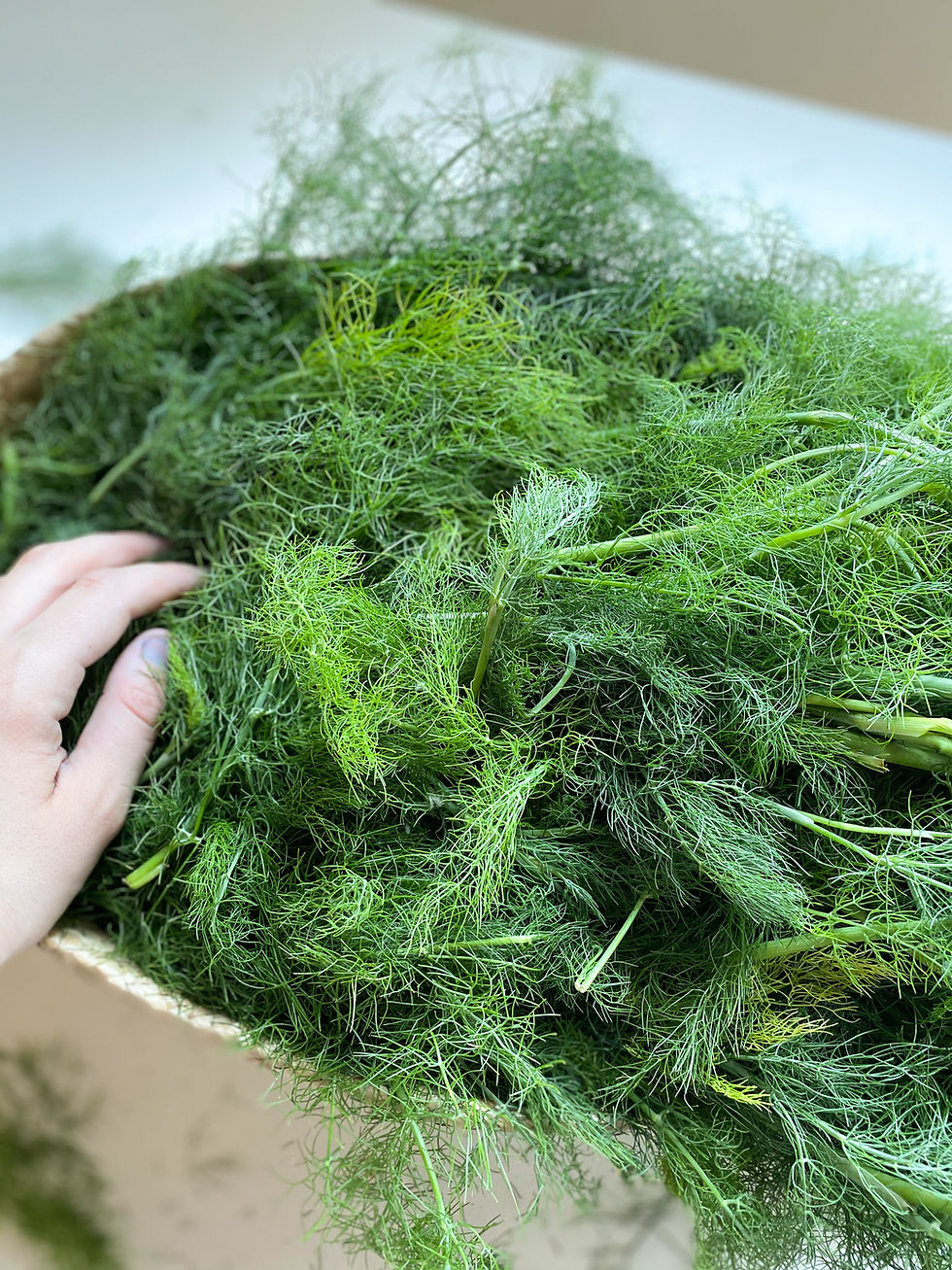
Fennel is considered invasive here, and in many other places in the U.S. as well as around the world, but it was prized by the Greeks and Romans, used as food and medicine, and even plays a prominent part in Greek mythology. Legend has it that the wand of fire carried by Prometheus and given to Humanity was made of fennel. Fennel can also provide an excellent source of natural color. The fronds and stems give a range of yellow to green, and when combined with iron can shift more to an olive or dark green hue.
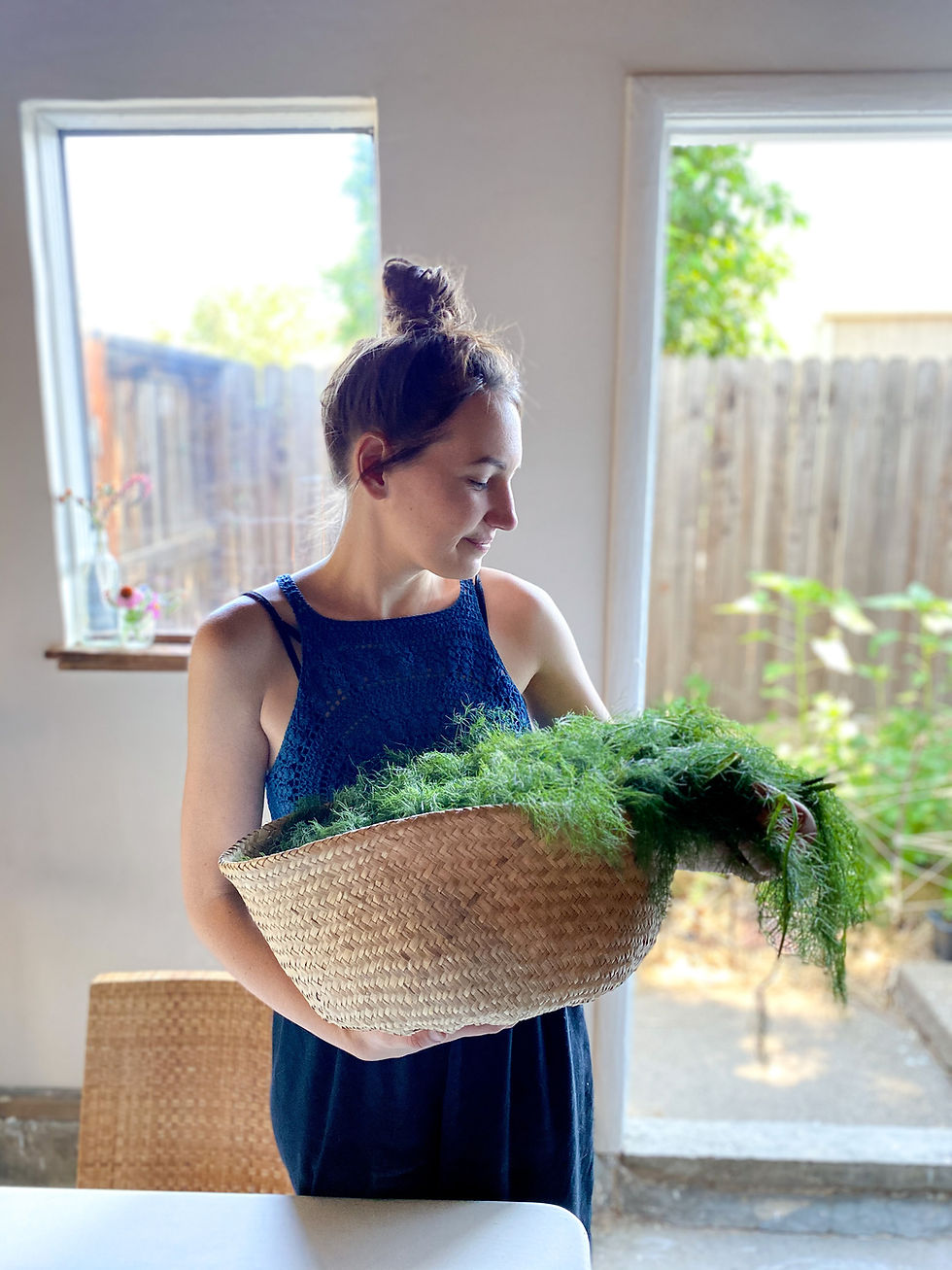
Fennel is an easy dye to make, but the color can often be very light, especially on cellulose fabrics, so the more plant material you use the better. I gathered a basketful of fronds and stems, and then used scissors to cut everything up into smaller chunks for the dyepot. If you don’t have a lot of stems you could skip this step and instead just tear up the fronds with your hands a bit.
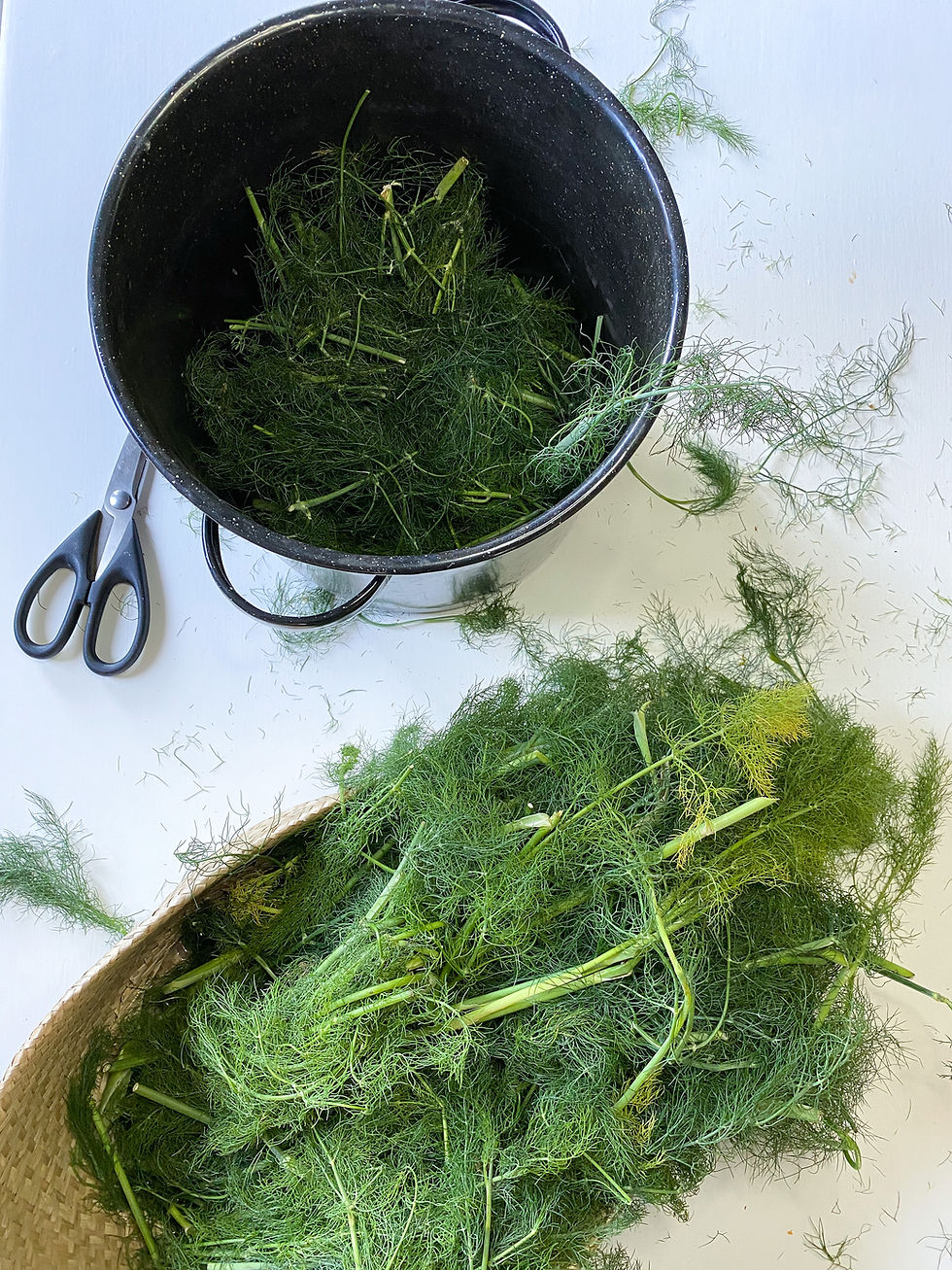
I covered the fennel with water and heated the mixture until it was steaming but not simmering for about 2 hours. I really judge the time I heat the dye by how the plant material looks, once the liquid in the dye pot is a strong color and the plant material looks grey/brown or “spent” then I know it’s time to turn off the heat. I let the dye bath sit overnight with the plant material left in it, then strained and composted the fennel, and added my samples to the bath. I heated the samples on low for an hour and then let them sit in the bath overnight.
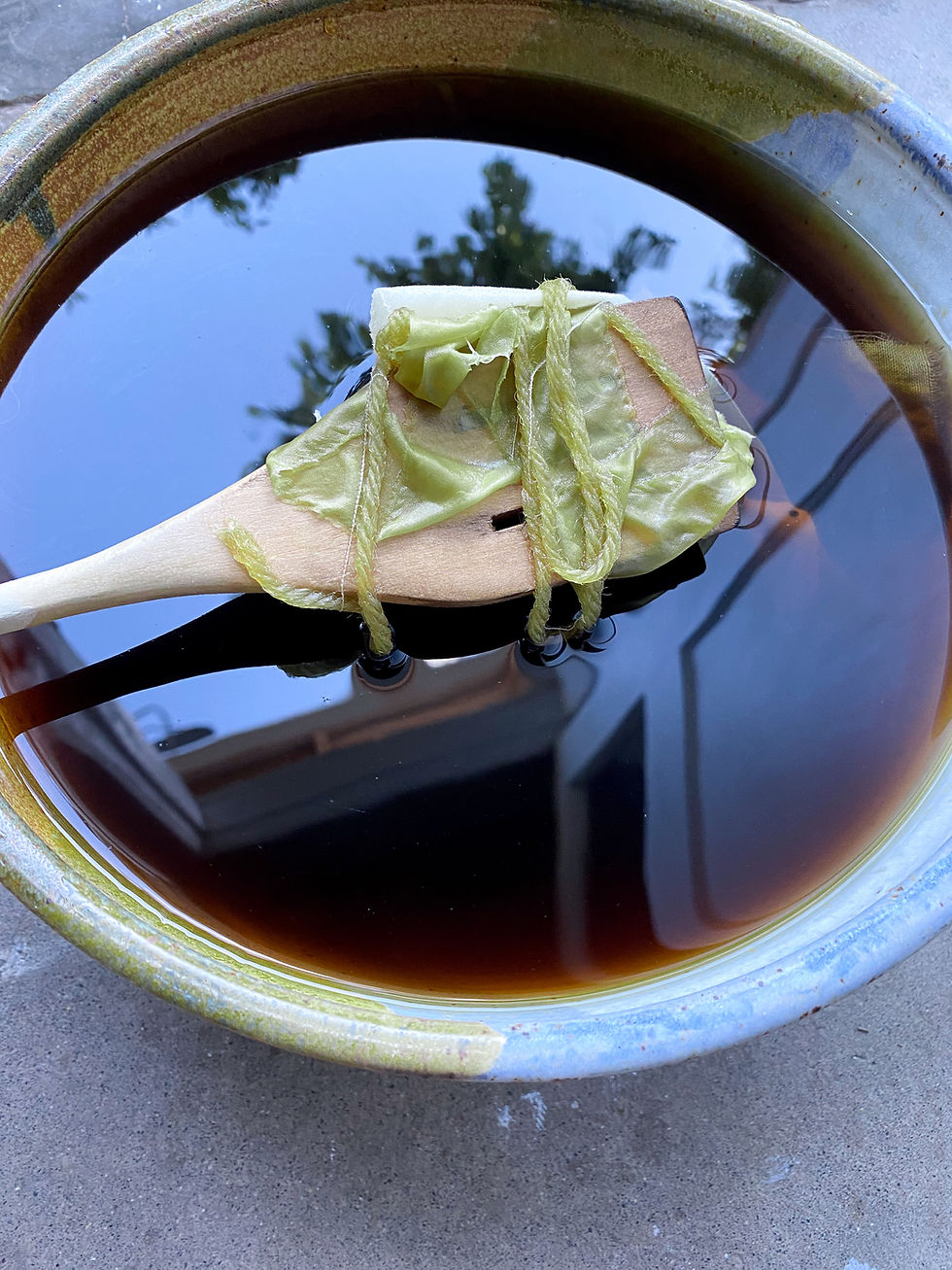
Fennel on its own is a light bright yellow/green, but adding iron can shift that green to a richer, darker color that I also love. Once I removed the first samples, I transferred the dye to another pot and added a ¼ tsp ferrous sulfate to the dye bath to darken it (I transferred the dye to another pot because iron can leave a residue that will affect future dye baths, I keep one pot specifically for working with iron to prevent cross contamination). You could also use a homemade iron solution, or mordant the fabric in an iron solution beforehand. If adding ferrous sulfate, make sure to stir the dye bath really well, or dissolve the powder in a separate container of water and then add to the dye bath, this ensures that there are no undissolved particles that will leave irregularities on the fabric. Make sure to wear a dust mask when working with iron powder.
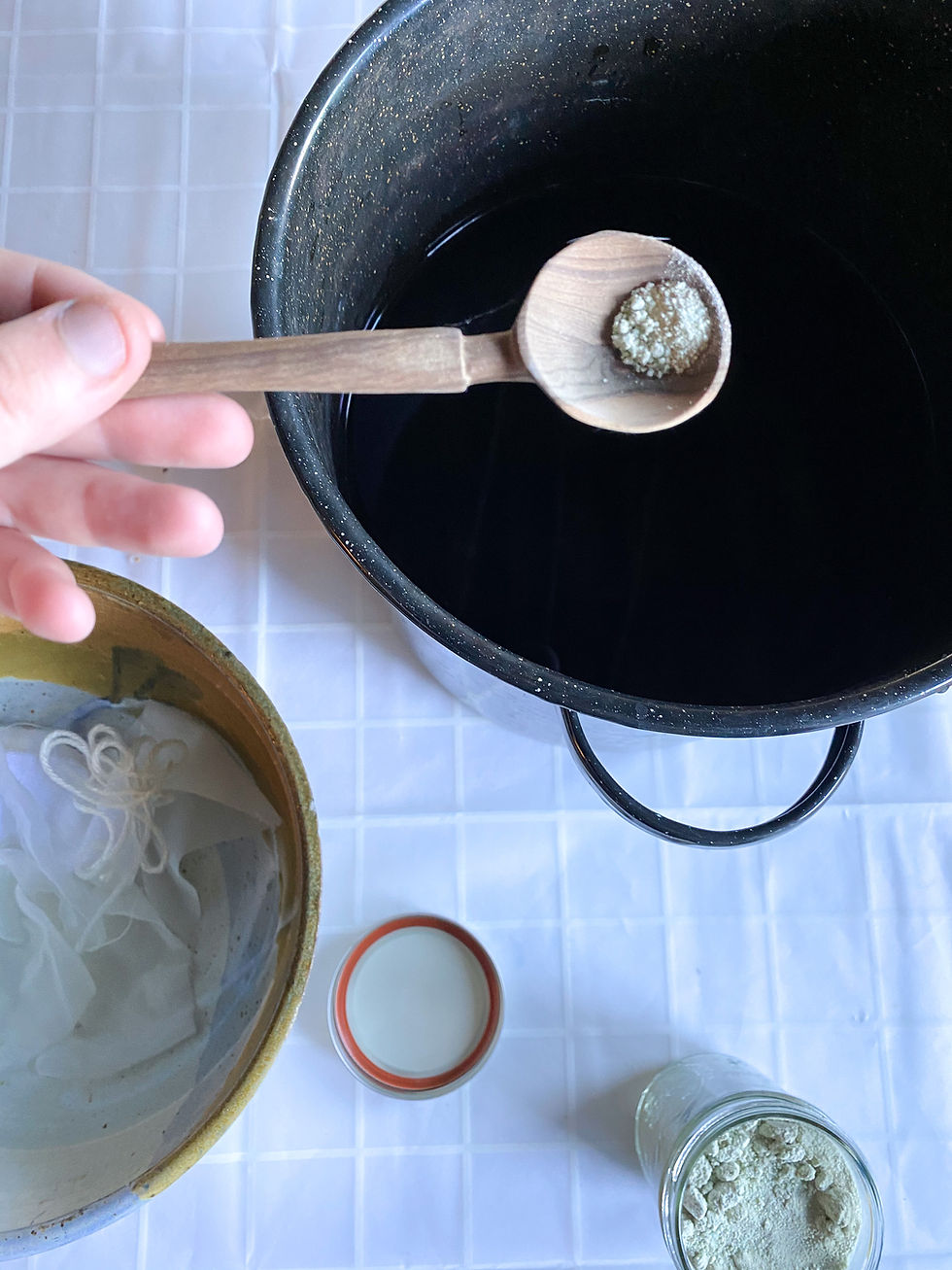
I added the second set of samples and heated the iron/fennel bath on low for an hour, and then let the samples soak overnight before removing and rinsing. The finished samples show the range of greens possible from this one plant. Fennel collected from different regions, at different times of the season will yield different hues as well. The fennel I worked with last year had more of a minty hue because I collected it in April, compared to the more grassy color I got from this year’s batch which I collected in June.







Comments